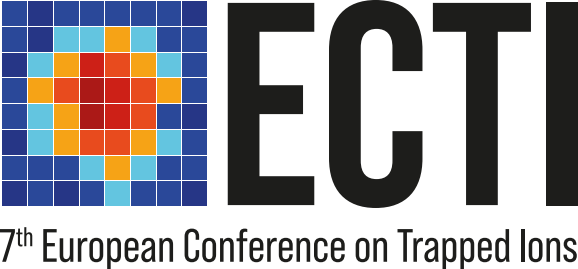Speaker
Description
Detecting and minimizing the micromotion in an ion trap system is crucial for precise control of the quantum states and suppression of heating. For this purpose, several methods have been reported, such as measuring fluorescence amplitude at the rf frequency, optimizing the optical sideband spectrum, minimizing ion displacement while alternating between different trap depths, and employing parametric excitation at the rf frequency [1-3]. In this work, we will present a simple but highly applicable method for micromotion detection using Raman beatnote-driven Rabi oscillation combined with dc potential scanning. Similar to the resolved-sideband spectroscopy method, this method exploits changes in absorption rate when the phase of the transition laser that the ion experiences is modulated by the ion's micromotion in the direction of the laser momentum. However, instead of obtaining the fluorescence spectrum, fluorescence is measured against scanned dc voltages, or the electric fields at the ion. The consequent profile follows a Bessel-like curve, which is predicted by the Bessel expansion of the modulation of the transition field. Without requiring the whole spectrum which demands many shots of measurement, the proposed method only requires 10-20 shots versus dc voltage scan, at the carrier transition or any of the sideband transitions. A demonstration using the Raman carrier transition and the first-order sideband transition will be presented, where the sensitivity of the measurement appears to be at the equivalent level to previously reported levels in practical operations. Also, a demonstration of an application for long-term monitoring of the stray field at the ion using the proposed method will be presented, along with additional measurements using other conventional methods. In addition to its accessibility, the method eliminates the need to undermine the trap stability, which is frequently encountered in conventional detection methods when diminishing the intensity of a laser or modulating the electric potential.
References
[1] D. J. Berkeland, et al. J. Appl. Phys. 83, 5025–5033 (1998).
[2] D. Leibfried, et al. Rev. Mod. Phys. 75, 281–324 (2003).
[3] J. Keller, et al. J. Appl. Phys. 118, 104501 (2015).

